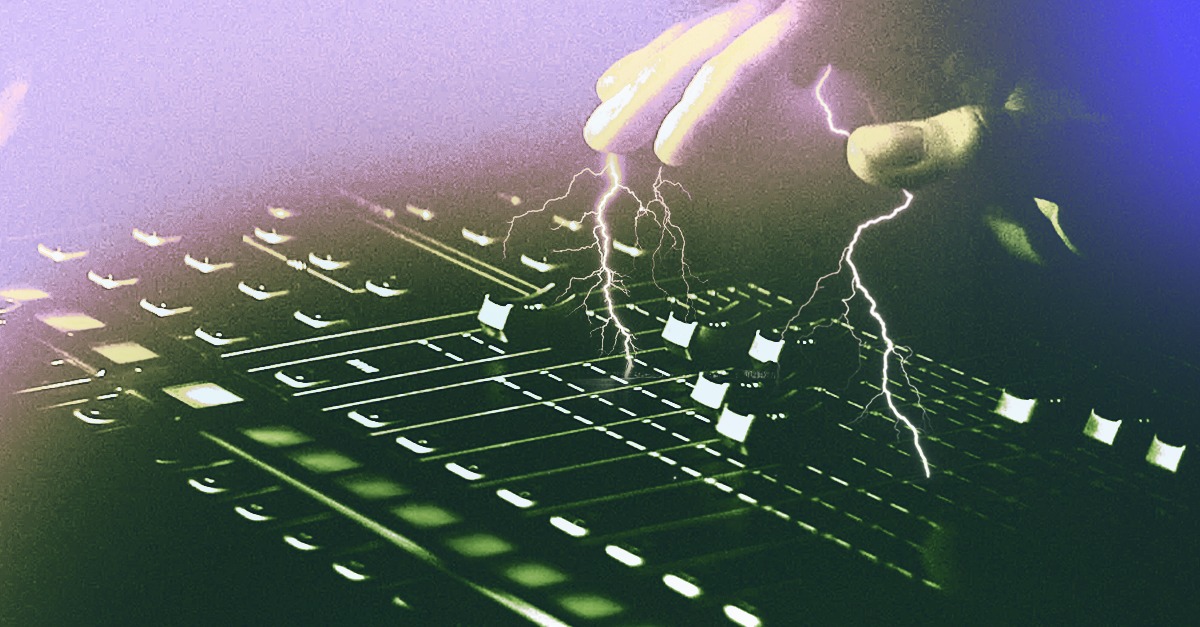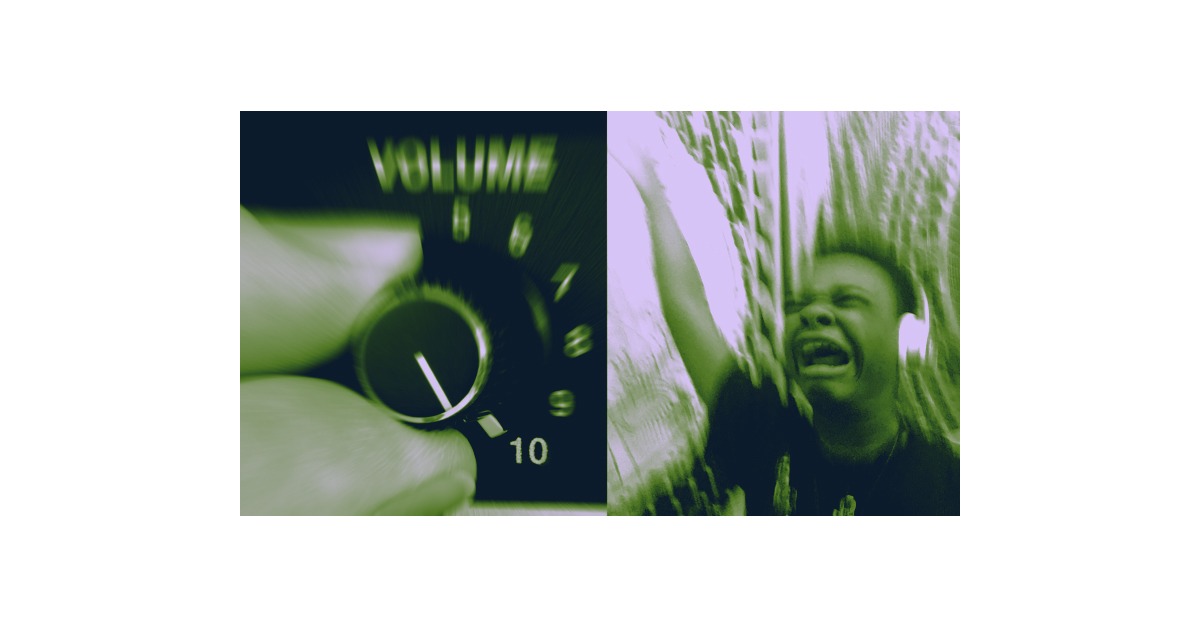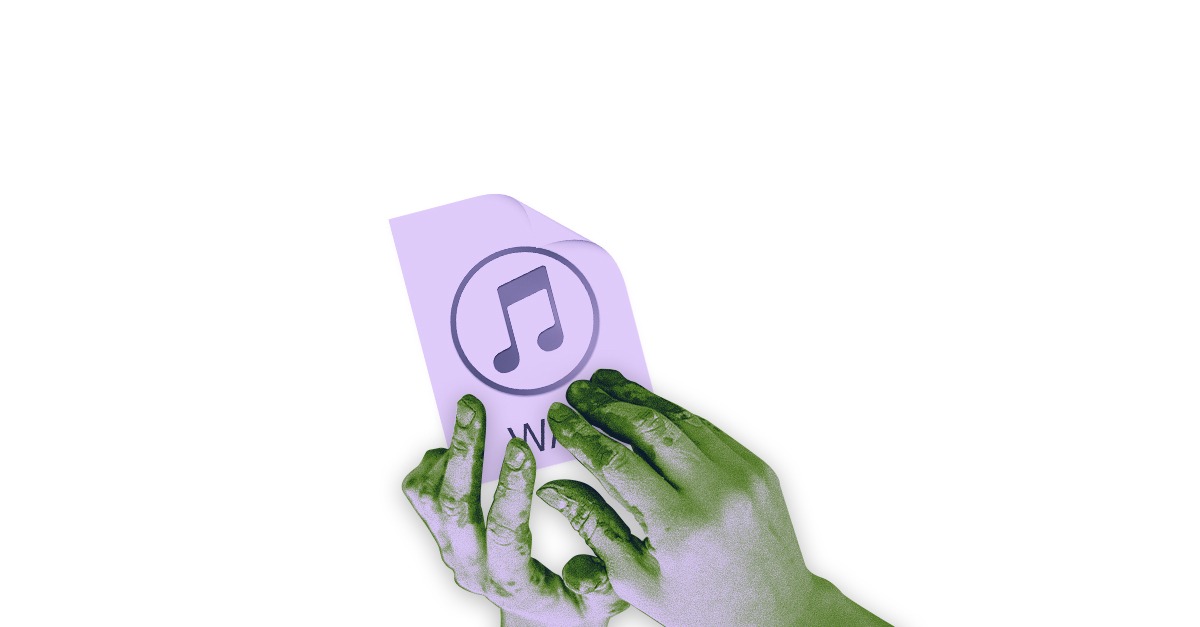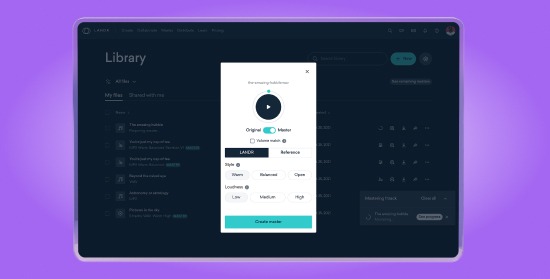
How to Make Music Louder With Mastering

Hit tracks from professional producers almost always have one thing in common—they’re loud.
That pro volume level is a basic expectation in modern music, so it can be pretty discouraging when your own mixes don’t measure up.
If you’ve ever wondered how to make music louder once you’re done mixing, the answer is usually found in the mastering process.
For those new to music production, mastering is a confusing subject. It’s subtle, complicated and the top pros charge thousands for it.
But not everything about it is mysterious. In fact, turning the volume of the song up just right for your listeners is a great topic to start learning how mastering can help you sound better.
Let’s dive in.
Get your song ready for release
You might think your latest track is ready for prime time as soon as you export it from your DAW.
But if you’ve ever uploaded a raw mix to a platform like Soundcloud, you know that it doesn’t always work perfectly.
If it’s too quiet it won’t have the same impact as the other songs on a playlist.
If it’s too loud it will sound distorted, grating and much worse than other songs on the platform.
If it’s too quiet it won’t have the same impact as the other songs on a playlist.
You need to get the level just right, and that’s not easy to do on your own.
How loud is too loud?

When you know that a loud sound helps you get recognized, it can be tempting to keep pushing your faders higher and higher in the mix.
But going too far is a big mistake.
If it’s too loud it will sound distorted, grating and much worse than other songs on the platform.
Loudness in music production is a delicate balance. Once the signal is too loud there’s no turning back.
When you go over the line, the signal starts clipping. This means that everything above the maximum gets lost and turned into a garbled version of itself.
Some types of clipping sound pleasant, but digital clipping from going over the maximum like this is harsh, unpleasant and always makes your songs sound worse.
The maximum level that any sound can exist in your DAW without clipping is 0 dBFS. That level is normally marked clearly on every track.
But even turning the tracks up to this level exactly doesn’t fix the loudness problem completely…
Hot tip: In some DAWs, turning your levels past zero doesn’t seem like it affects anything. This is because of the complicated internal math that powers your channels, faders and busses. Even if you don’t hear the clipping when you mix—it will happen when you export the file if the signal goes above 0 dBFS.
What is dynamic range?
So if you can only turn the sound up so much, how do you make it louder at all?
If you looked at the loudest part of your song and turned the whole thing up so that the highest single moment was just under 0 dBFS, some parts would still be quiet.
In fact, this is exactly what happens when you use the normalize function on an audio clip in your DAW.
Normalizing isn’t the answer—not if you want your song to sound the loudest it possibly can without clipping.
The difference between that loud moment and the other parts of the song is known as the dynamic range.
To get maximum volume, you need to reduce that dynamic range.
To get maximum volume, you need to reduce that dynamic range.
That means making the quiet parts louder while keeping the loudest parts at the maximum.
So how do you do that, and how do you know when it’s just right?
How to fix quiet music

You might know about dynamic range if you’ve ever used a compressor plugin before in your mixes.
Compressors work by measuring the input signal and reducing the volume when it goes over a certain level.
Tweaking the dynamics of an entire mix is similar—but unfortunately it’s a lot more complicated too.
How do you reduce the dynamic range without destroying the sound? How do you know how far to go? And what happens when you get close to the edge?
The truth is, these are the nitty gritty technical details that mastering takes care of.
Mastering solves these problems so that your fans hear your songs properly wherever they listen.
The bottom line is—if you want your music to be as loud as possible and still sound good, you need mastering.
The best way to master your tracks

When it comes to mastering, there are a few options depending on your needs and budget.
In the past, you’d be forced to pay an expensive engineer for even basic mastering tasks.
You can still hire a mastering professional to do the job. In fact, this is probably how to get the best possible results, but it’s also the most expensive option.
If you’re just getting started with music production or you’re working with a limited budget, hiring a pro for every single track you produce isn’t realistic.
Your next option is to try a dedicated mastering plugin and hope for the best. This kind of technology has come a long way, but it still has a steep learning curve.
Plugins like this can easily do more harm than good when you don’t know how to use them. And spending all that effort learning and tweaking presets takes time away from your creative flow making music.
Your third and easiest option is to use AI-powered mastering.
Think of it like a virtual mastering engineer that listens to your tracks, analyzes them scientifically and makes the best possible decisions to prepare them for release.
Think of it like a virtual mastering engineer that listens to your tracks, analyzes them scientifically and makes the best possible decisions to prepare them for release.
That includes making your music louder—and getting the levels just right for Spotify, Apple Music, Soundcloud and others.
LANDR’s AI mastering is the best in this category by a wide margin. It features the most sophisticated and best sounding mastering engine out there.
Here’s an example of what it can do for your tracks.
Try LANDR Mastering on Your Own Tracks
And it’s not just a one-size-fits all fix either. LANDR includes the kind of customization options that you’d get with a real mastering engineer.
All that makes LANDR the quickest, easiest and best sounding solution for making songs louder on Soundcloud and other streaming platforms.
Loud and proud
Loudness is a major factor in the sound of modern music. Without the right levels, your tracks aren’t competing on a level playing field.
Now that you know the basics of loudness and dynamics, go find out what mastering can add to your sound.
Gear guides, tips, tutorials, inspiration and more—delivered weekly.
Keep up with the LANDR Blog.




